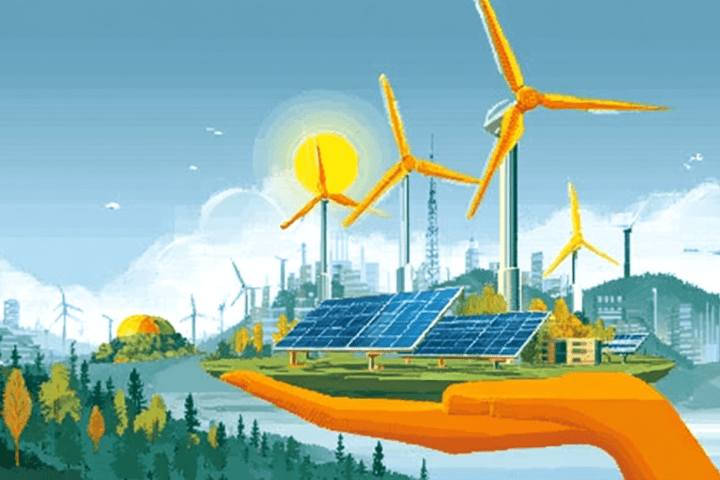Climate change is no longer an abstract future threat—it’s a present economic reality reshaping markets, investments, and everyday prices. From insurance premiums to food costs, from real estate values to corporate valuations, the warming planet is fundamentally altering how money flows through the global economy. Investors, businesses, and consumers are confronting a new paradigm where climate risks translate directly into financial consequences, and adaptation becomes as important as mitigation.
The Rising Cost of Everyday Life
Climate change impacts are appearing on price tags across the economy in ways that most consumers don’t immediately recognize. Extreme weather events, shifting agricultural conditions, and supply chain disruptions driven by environmental factors are steadily increasing costs for basic goods and services.
Food prices and agricultural volatility
Global food prices have become increasingly volatile as climate change disrupts agricultural production. Droughts, floods, heat waves, and unpredictable weather patterns reduce crop yields and destroy harvests. The 2022 heat wave across Europe decimated wheat and corn production, driving prices upward globally. Similar events are becoming more frequent across all agricultural regions.
Coffee prices exemplify climate’s economic impact. Rising temperatures are shrinking the geographical zones where coffee grows successfully, while pests and diseases thrive in warmer conditions. Brazil, Vietnam, and Colombia—the world’s top producers—face mounting challenges. Coffee prices have surged, and projections suggest further increases as suitable growing areas continue contracting. Your morning espresso is becoming a climate change indicator.
Chocolate faces similar pressures. Cocoa production concentrates in West Africa, where changing rainfall patterns and rising temperatures stress crops. Major chocolate manufacturers warn that cocoa may become significantly more expensive or even scarce within decades. These aren’t hypothetical future scenarios—they’re affecting current supply contracts and retail prices.
Meat and dairy prices reflect climate impacts through multiple channels. Heat stress reduces livestock productivity. Droughts increase feed costs as grain prices spike. Water scarcity in key agricultural regions forces production adjustments. The full cost of animal agriculture’s substantial carbon footprint is gradually being internalized through regulations and carbon pricing mechanisms.
Insurance and the uninsurable future
Insurance markets provide the clearest signal of climate risk becoming financially material. Homeowners in coastal areas, flood zones, and wildfire-prone regions are seeing premiums skyrocket or coverage denied entirely. Major insurers are withdrawing from high-risk markets, leaving homeowners unable to obtain affordable protection.
California’s insurance crisis illustrates the problem. After catastrophic wildfires caused tens of billions in losses, multiple major insurers stopped writing new homeowners policies in the state. Existing customers face premium increases of 30-50% or more. Florida’s property insurance market is collapsing under repeated hurricane losses, with several insurers declaring bankruptcy. The state-backed insurer of last resort is becoming the primary option for many homeowners.
These aren’t isolated incidents. Insurance companies base decisions on sophisticated climate modeling showing that extreme weather events will become more frequent and severe. When insurers—whose business model depends on accurately assessing risk—deem areas too dangerous to cover profitably, that’s a powerful economic signal about climate reality.
Infrastructure and adaptation costs
Climate adaptation is imposing enormous costs on public infrastructure. Coastal cities are building sea walls and drainage systems to combat flooding. Utilities are burying power lines to prevent wildfire ignition and hardening grids against extreme weather. Water utilities are investing in new sources and conservation technology as traditional supplies become unreliable.
These infrastructure costs ultimately fall on consumers through taxes, utility rates, and fees. Miami Beach has spent hundreds of millions elevating roads and installing pumps to combat rising seas, with billions more needed. New York City is building massive storm surge barriers following Hurricane Sandy’s devastation. Every coastal metropolis faces similar adaptation imperatives with multi-billion-dollar price tags.
Investment Markets Repricing Climate Risk
Financial markets are fundamentally reassessing asset values through the lens of climate risk. Companies, properties, and entire sectors are being repriced as investors incorporate environmental factors into valuation models. This repricing represents one of the most significant wealth transfers in modern economic history.
Fossil fuel industry divestment and stranded assets
The fossil fuel sector faces existential challenges as the climate economy takes shape. Major institutional investors—pension funds, sovereign wealth funds, university endowments—are divesting from coal, oil, and gas companies. This divestment movement, once primarily ethical in nature, has become financially motivated as climate transition risks threaten fossil fuel assets.
The concept of stranded assets—resources that lose value before being fully exploited—now haunts fossil fuel companies. Proven reserves on corporate balance sheets may never be economically extracted if climate policies tighten or if renewable energy makes fossil fuels uncompetitive. Trillions of dollars in fossil fuel company valuations could evaporate, representing potentially the largest asset write-down in history.
Oil majors are responding with divergent strategies. European companies like BP and Shell are pivoting toward renewable energy and low-carbon technologies. American companies like ExxonMobil remain focused on traditional operations while making modest clean energy investments. Financial markets are rewarding companies with credible transition plans while punishing those perceived as unprepared for a carbon-constrained future.
Green investment boom
Capital is flooding into climate solutions at unprecedented rates. Renewable energy investment now exceeds fossil fuel investment globally. Electric vehicle companies have attracted hundreds of billions in market capitalization. Battery manufacturers, carbon capture developers, green hydrogen producers, and sustainable agriculture companies are seeing massive funding rounds.
This green investment boom creates opportunities and risks. Valuations in some climate tech sectors appear disconnected from near-term profitability, raising concerns about a potential bubble. However, the fundamental drivers—climate policy, technological progress, and changing consumer preferences—suggest sustained long-term growth potential.
Five key climate investment trends reshaping capital allocation:
- ESG integration: Environmental, social, and governance factors are becoming standard in investment analysis, with climate considerations paramount in ESG frameworks
- Climate-aligned benchmarks: Index funds and ETFs are launching climate-focused versions that tilt portfolios toward low-carbon companies and climate solutions
- Transition finance: Funding for helping carbon-intensive industries decarbonize is emerging as a major category, recognizing that transformation of existing industries matters as much as new green companies
- Nature-based investments: Carbon credits from forest preservation, regenerative agriculture projects, and ecosystem restoration are attracting significant capital
- Climate resilience infrastructure: Investments in adaptation—flood barriers, drought-resistant agriculture, cooling infrastructure—are growing as physical climate risks become undeniable
Real Estate: The Great Repricing
Property markets worldwide are undergoing climate-driven revaluation. Location has always determined real estate values, but climate risks are redefining which locations command premiums and which face value destruction.
Coastal property depreciation
Oceanfront real estate, traditionally among the most valuable property, faces mounting threats. Sea level rise, storm surge, and erosion are making coastal locations progressively riskier. Miami, one of the world’s most vulnerable major cities to sea level rise, is experiencing bifurcated property markets—higher elevation areas maintain values while low-lying waterfront properties stagnate or decline.
Research shows homes in flood zones are selling at increasing discounts compared to similar properties in safe areas. Buyers are becoming more climate-conscious, demanding detailed flood risk disclosure and factoring rising insurance costs into purchase decisions. Some coastal properties are becoming effectively unsellable as buyers recognize they’ll be underwater—literally—within the property’s mortgage term.
Climate migration and emerging hot spots
Climate considerations are driving migration patterns that reshape regional property markets. People are moving away from drought-stricken areas, wildfire zones, and flood plains toward regions perceived as climate havens. Cities like Duluth, Minnesota, and Buffalo, New York—previously considered undesirable due to harsh winters—are marketing themselves as climate refuges with abundant fresh water and milder future temperatures.
The Sun Belt migration that defined American demographics for decades may reverse as extreme heat makes southern regions increasingly unlivable without massive air conditioning costs. Phoenix regularly experiences temperatures over 115°F, raising questions about long-term habitability. Property markets haven’t fully adjusted to these realities yet, but repricing is beginning.
Commercial real estate and climate disclosure
Commercial property faces mounting pressure to disclose climate risks and improve energy efficiency. Regulations requiring buildings to reduce emissions are spreading globally, with non-compliant properties facing penalties or restrictions. New York City’s Local Law 97 imposes fines on large buildings exceeding emissions limits, potentially impacting property values for non-compliant structures.
Corporate tenants increasingly demand energy-efficient, climate-resilient office space, driving competition for modern green buildings while older inefficient structures face declining occupancy and rents. This bifurcation is creating winners and losers in commercial real estate markets based on climate performance.
Supply Chain Disruptions and Business Costs
Climate change is disrupting global supply chains with increasing frequency, imposing costs on businesses and consumers. Extreme weather events close ports, damage transportation infrastructure, and halt production, creating shortages and price spikes.
Critical supply chain vulnerabilities include:
- Transportation bottlenecks: Droughts reduce river levels, limiting barge traffic on major commercial waterways; extreme heat warps railway tracks; hurricanes close ports for weeks
- Manufacturing interruptions: Floods and storms shut down factories; water scarcity affects production processes requiring substantial water; power outages from extreme weather halt operations
- Agricultural supply disruptions: Crop failures from droughts, floods, or heat waves create shortages of raw materials for food processing and industrial applications
- Concentrated production risks: Key components or materials produced in climate-vulnerable regions create single points of failure affecting entire industries
The 2021 Texas winter storm demonstrated supply chain climate vulnerability dramatically. The unusual freeze shut down power plants, refineries, and chemical facilities, creating shortages and price spikes for products ranging from gasoline to plastics to electronics. Total economic losses exceeded $200 billion for a single week-long event.
Corporate Climate Disclosure and Accountability
Regulators are mandating climate risk disclosure, transforming how companies report financial information. The Securities and Exchange Commission, European Union, and other jurisdictions are requiring detailed climate-related financial disclosures, forcing companies to quantify and report climate risks and emissions.
These disclosure requirements are making climate considerations material financial issues rather than optional sustainability initiatives. Companies must assess how climate change affects operations, disclose greenhouse gas emissions across their value chains, and explain transition plans. Investors are using this information to make allocation decisions, and companies with poor climate performance face capital costs penalties.
Climate litigation is emerging as a financial risk category. Communities, states, and advocacy groups are suing fossil fuel companies and other major emitters for climate damages. While most cases are in early stages, successful lawsuits could impose massive financial liabilities. Companies are booking reserves for potential climate litigation costs, acknowledging this as a material risk.
The Transition Economy: Winners and Losers
The climate economy is creating clear winners and losers across sectors. Companies positioned for the low-carbon transition are attracting investment and seeing valuations soar. Those dependent on fossil fuels or exposed to physical climate risks face declining prospects.
Sector-specific climate economy impacts:
- Renewable energy and cleantech: Explosive growth in solar, wind, batteries, and electric vehicles creating substantial wealth and employment
- Fossil fuel extraction: Declining investment, stranded asset risks, and regulatory pressures forcing industry contraction
- Automotive: Rapid pivot to electric vehicles forcing massive capital reallocation; traditional manufacturers struggling against EV startups
- Agriculture: Climate stress reducing yields and profitability in some regions while creating opportunities for climate-adapted crops and sustainable practices
- Insurance and reinsurance: Retreating from high-risk markets while developing new products for climate resilience and renewable energy projects
- Technology: Cloud computing and data centers face pressure over energy consumption but also benefit from demand for climate modeling and efficiency optimization
Conclusion
The climate economy is not emerging—it’s here. Price signals across markets reflect the physical and transition risks that climate change poses to businesses, investments, and consumers. From rising food costs to plummeting coastal property values, from fossil fuel divestment to renewable energy investment booms, climate considerations are fundamentally reshaping economic relationships.
Understanding these shifts is essential for making informed financial decisions. Investors must assess climate risk in portfolios. Businesses must adapt operations and supply chains. Consumers must recognize that climate impacts are already affecting household budgets and will increasingly do so.
The transition to a climate economy will create enormous opportunities alongside substantial dislocations. Those who recognize the transformation underway and position accordingly will thrive. Those who ignore climate’s economic implications do so at their peril. The question is no longer whether climate change will impact the economy—it’s how quickly individuals, businesses, and societies can adapt to the new reality where climate and economics are inseparable.
















